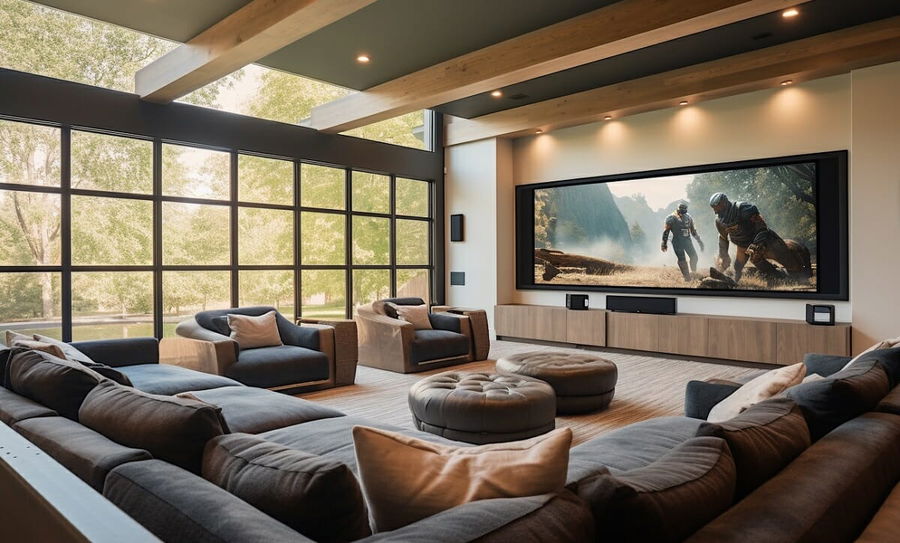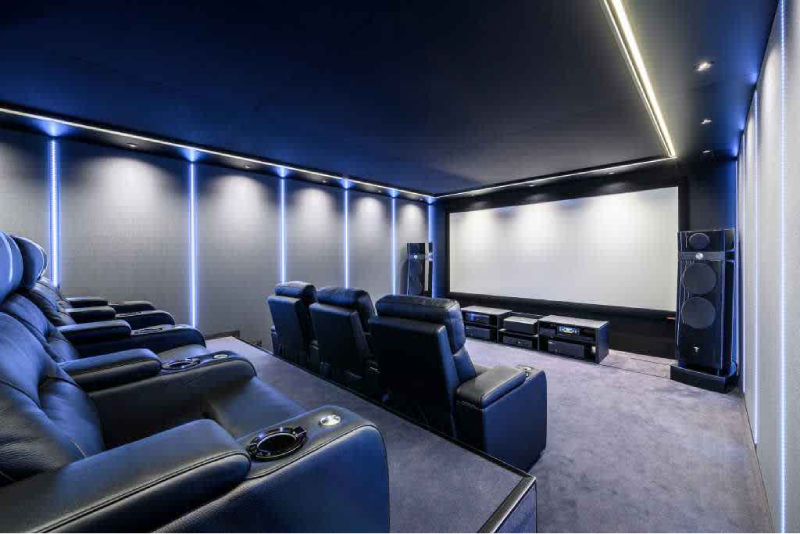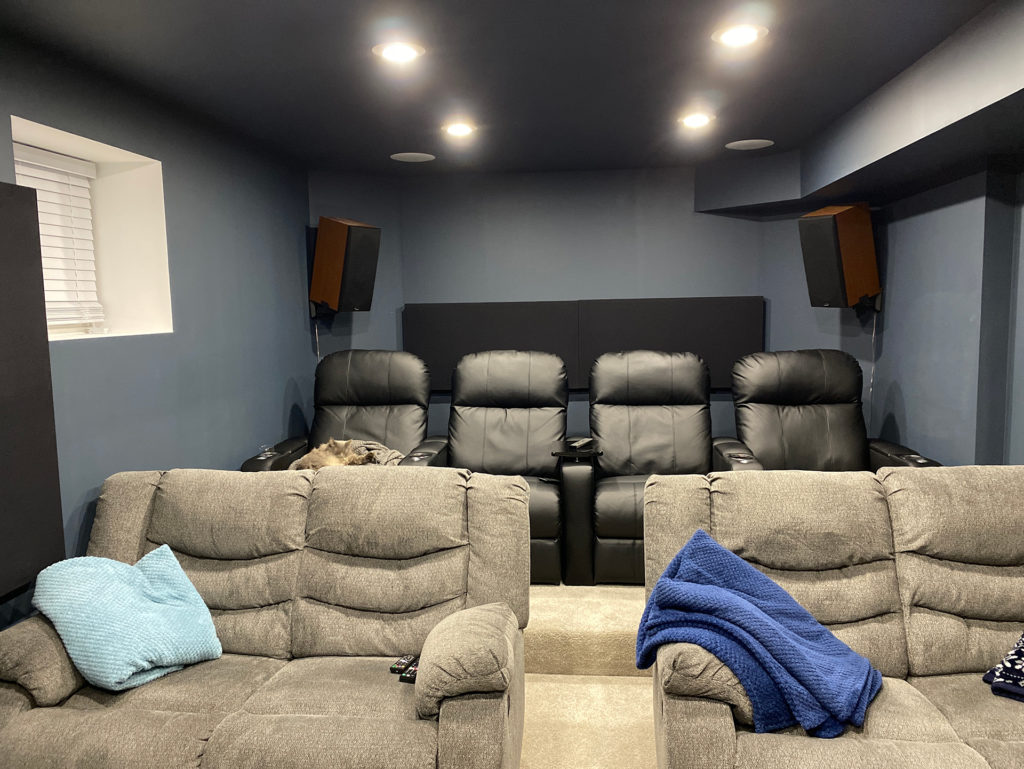Professional Tampa Home Theater Installation for a Smooth Setup
Professional Tampa Home Theater Installation for a Smooth Setup
Blog Article
Home Theater 101: Everything You Required to Know for a Cinematic Experience at Home
Developing a home movie theater that rivals the cinematic experience of an industrial theatre includes mindful consideration of multiple elements, including screen choice, audio systems, and space format. Whether you are contemplating the perfect display size or the details of border sound, recognizing these basics is essential.
Picking the Right Screen
When establishing a home cinema, picking the appropriate screen can make or break the viewing experience - tampa home theater. The display serves as the centerpiece of your setup, influencing photo top quality, checking out angles, and overall visual. Trick variables to take into consideration consist of screen resolution, kind, and size
Initially, identify the ideal display dimension based on your space measurements and seating distance. Next off, choose between various screen types, such as fixed-frame, motorized, or retracting displays, each offering distinct benefits.
Resolution is another important factor. For a genuinely immersive experience, think about a screen created for 4K and even 8K web content, making certain sharpness and quality. Furthermore, think about the display's gain, which affects illumination and comparison; a greater gain can enhance illumination in well-lit rooms, while a lower gain may be a lot more ideal for darker settings.
Picking Sound Equipment
Audio equipment is a crucial component of any home movie theater system, considerably boosting the general watching experience. The option of audio equipment can determine the depth, clearness, and immersion of audio, essential for developing a cinematic ambience.
When selecting audio tools, consider a border stereo, which typically includes a receiver, multiple speakers, and a speaker. A 5.1 or 7.1 network system is advised, where the initial number represents the audio speakers and the second the speaker, supplying an immersive soundscape. The receiver is the heart of the system, managing sound and video signals, and should support contemporary formats like Dolby Atmos for an improved spatial experience.
Quality audio speakers are vital; look for models that use a balanced audio account with good bass reaction. Floor-standing audio speakers can generate richer sound, while shelf choices conserve space. In addition, consider cordless choices for convenience of installation, although wired systems frequently provide superior efficiency.

Optimal Seating Arrangements
Developing an excellent home movie theater experience pivots substantially on ideal seating setups. The arrangement of seats plays a critical role in both comfort and checking out quality, straight impacting the overall cinematic experience.
First, take into consideration the screen size and seeing range. An usual standard is to place seats at a distance about 1.5 to 2.5 times the angled size of the screen. This makes certain an immersive experience without stressing the eyes.
Next, elevation is crucial. The back rows need to be higher than the front to avoid obstructions if your seating is in a tiered format. For flat seating, make certain that the front row is not too close to the display, which everyone has a clear line of view.
Furthermore, think about the setup in terms of social dynamics. Group seating can improve the public experience, while private seats may be chosen for individual watching.

Last but not least, prioritize convenience with ergonomic seating that sustains prolonged viewing periods. Integrating recliner chairs or cushioned seats can dramatically enhance the experience, making the home cinema a preferred location for both entertainment and relaxation.
Lighting and Atmosphere
Efficient illumination and ambiance are necessary components of a well-designed home movie theater, as they substantially influence the watching experience. The right lights can improve the motion picture feeling, while inadequate selections can diminish it. For optimal outcomes, take into consideration a layered lighting strategy that includes ambient, job, and accent lights.
Ambient lighting offers basic illumination, Continued guaranteeing that the space is not entirely dark, which can strain the eyes. Dimmer switches are very recommended, enabling modifications based upon the content being seen. Job lighting, such as wall sconces or flooring lights, uses useful lighting for activities like analysis or navigating the space without interfering with the total ambience.
Accent lighting can be utilized to highlight architectural functions or develop prime focus, including deepness and interest to the room. LED strip lights behind screens or along racks can provide a refined glow that improves the visual experience without overwhelming the audience.

Wiring and Installation Tips
A well-planned electrical wiring configuration is crucial for achieving optimum efficiency in your home theater system. Appropriate wiring not just guarantees top quality sound and video clip signals however likewise improves the overall visual of your area. Begin by mapping out your design, determining where each element will be placed, including your display, speakers, and receiver.
When picking cables, prioritize top quality, properly determined electrical wiring to reduce signal loss. HDMI cables should be utilized for video clip connections, while speaker wire need to match the specs of your audio speakers and amplifier. Go with in-wall ranked wires to follow safety criteria and maintain a clean appearance.

Verdict
In recap, producing a remarkable home cinema experience requires careful factor to consider of numerous aspects, including screen choice, audio equipment, seating arrangements, illumination, and circuitry. Each part plays a vital role in achieving optimal performance and setting, inevitably improving the satisfaction of home amusement. By prioritizing these variables, a cinematic ambience can be effectively replicated, enabling for immersive seeing experiences that measure up to standard theater settings. Interest to detail in each location is crucial for total fulfillment.
Producing a home theater that matches the cinematic experience of a commercial theater entails mindful consideration of several parts, including screen option, sound systems, and space format.When establishing up a home cinema, selecting the ideal screen can make or break the checking out experience. Next off, pick in between various display types, such as fixed-frame, mechanized, or retracting screens, each offering distinctive advantages. For a truly immersive experience, take into consideration a display created for 4K or even 8K web content, ensuring intensity and clarity.In summary, creating an extraordinary home movie theater experience calls for cautious factor to consider of various components, consisting of display choice, audio equipment, seating setups, lights, and wiring.
Report this page